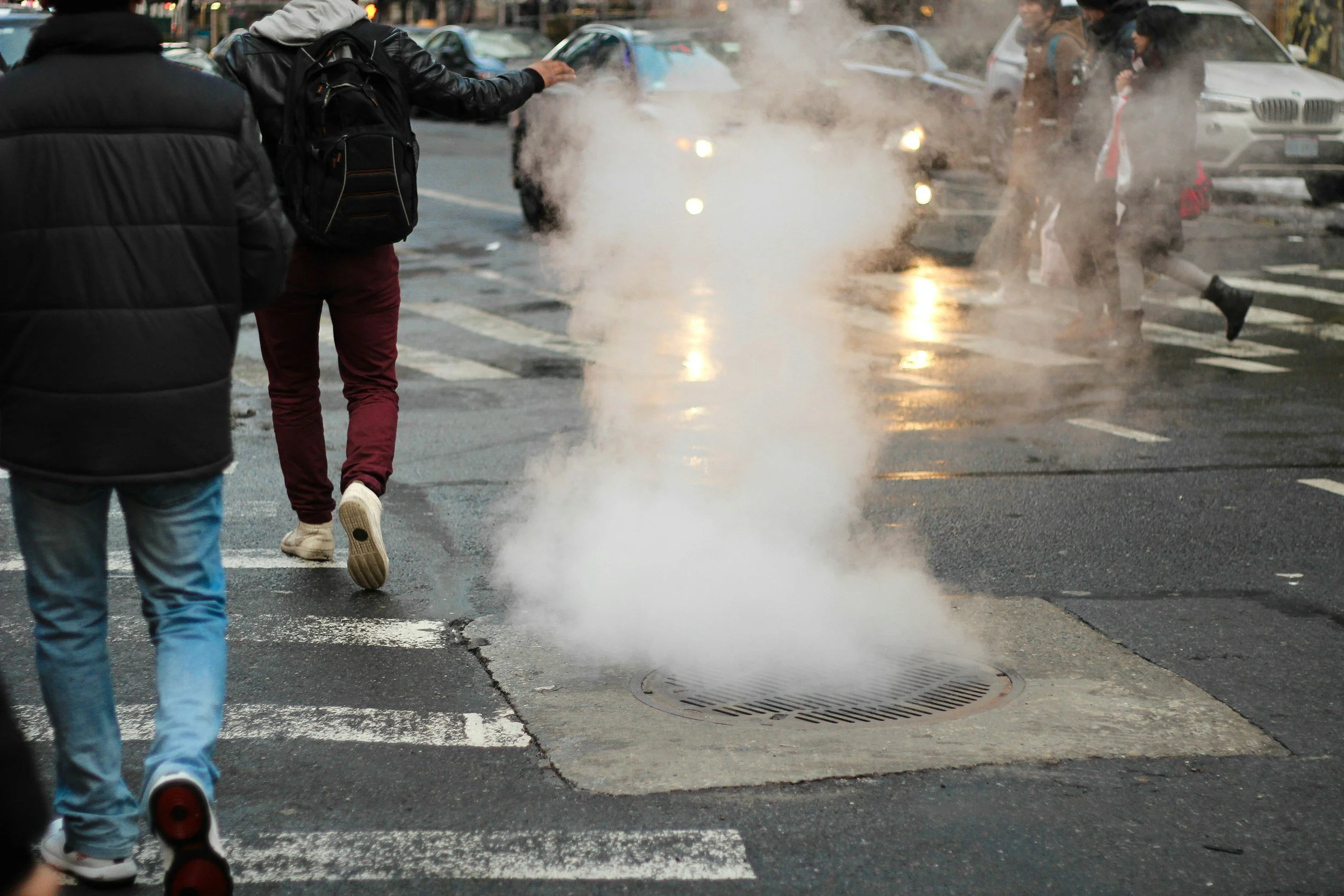
The Manhole Odor Eliminator is a carbon filter system designed to remove odors from sewer vents, grease traps, combined sewer stormwater systems, storm drains and other vented manholes. Each filter cartridge contains activated carbon filter media. This filter media can remove large amounts of hydrogen sulfide and other odors from sewer manholes. The Manhole Odor Eliminator is a complete odor control filter system.

The Manhole Odor Eliminator
Basic Problem
Sewer gases escape from manhole covers and cause nuisance, health and safety problems. The ambient air flow into manholes and the sewer gases flow out of manholes is caused by many factors including sewer system design, operation, time, chemical and biological, environmental and other conditions.
These conditions result in fluctuating pressure and flow of air and gasses through manhole covers. On extensive sewer lines with multiple manholes only some of the manholes may have severe odor problems.
Sewer odors
Harmful hydrogen sulfide and other gasses
Complaints from residents and businesses
Common Solution - Prior Art
A pre-formed insert is fitted under the manhole cover and an odor absorbing media treats sewer gases before exiting manhole cover.
This is considered an improvement in reducing odor complaints. The problem with this method is a short cartridge life, high cost of cartridge replacement and service. Health and safety issues from hydrogen sulfide and other gasses occur during each service along with disruption of traffic in the service area.
Short filter life
High maintenance cost
Limited effectiveness
The Manhole Odor Eliminator is designed so that contaminated air enters the filter through a hole in the bottom of the cartridge. Air is then dispersed through activated carbon before exiting the filter. The manhole odor eliminator is equipped with an air bladder. The bladder buffers the frequent fluctuations of sewer gas. The odor absorbent carbon only has to treat the peak flow rates. The filter cartridge is supported by either a plastic or stainless steel frame.
Introducing The Manhole Odor Eliminator
The Manhole Odor Eliminator is the latest patented sewer odor treatment method. This engineered device is considered a substantial improvement over prior art.
This product includes many of the prior art items and features plus a variable volume device (bladder) that acts to accommodate the frequent fluctuations of pressure and flow that affects sewer gases and ambient air flow in sewer systems.
The expansion and contraction of air and gases from thermal temperature changes and plumbing cause flow in or out of the manhole. The bladder captures a portion of this flow and only the flow exceeding the bladder capacity allows sewer gas to pass through the cartridge and exit the manhole. This feature substantially extends the life of the activated carbon filter cartridge many times.
Long filter life
Low maintenance cost
Higher efficiency
Grease Trap Filters
The Manhole Odor Eliminator is very good at eliminating the odors from grease traps. Shallow grease traps can be fitted with a customized unit.
Manhole Odor Eliminators also work well in septic systems, sand-oil interceptors, fountain water storage and other underground vaults. Custom support frames can be made to fit round, rectangular or any other shaped manhole cover.
Fits shallow manholes
Works in many different environments
Customizable
Combined Sewer Stormwater System
The Manhole Odor Eliminator also works in storm drain catch basins in both stormwater systems and in combined sewer stormwater systems. The combined system uses the same activated carbon filter cartridge and bladder as the standard Manhole Odor Eliminator®. The stormwater bypass allows water to flow through the system while still sealing the gases in the storm drain. Combined sewer stormwater filters are also fitted with a rain deflector cover to prevent saturation of the carbon filter cartridge.
Note: Inventor of the Manhole Odor Eliminator has several other bladder-related patents and patents pending for solutions to other environmental and equipment problems. Click here to visit the Inventive Resources, Inc. website.
Participate in a Study
We are currently testing manholes for hydrogen sulfide gas concentrations. Contact us for more information on having your location included in our study.
Get More Info
Want pricing or sizing information, or just have a question for us? Fill out the form and we’ll get back to you ASAP.





